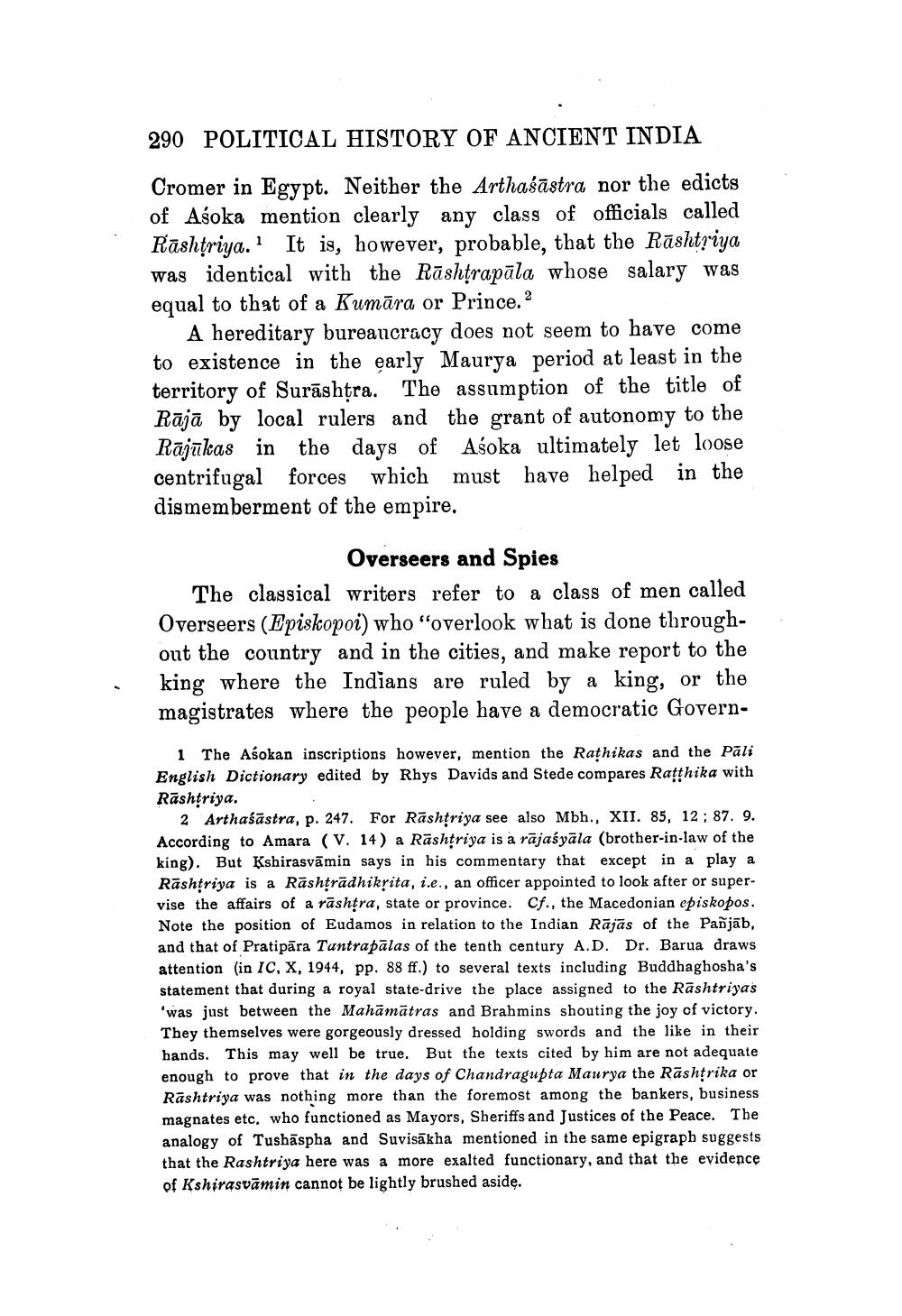________________
290 POLITICAL HISTORY OF ANCIENT INDIA
Cromer in Egypt. Neither the Arthasastra nor the edicts of Aśoka mention clearly any class of officials called Rashtriya.1 It is, however, probable, that the Rashtriya was identical with the Rashtrapala whose salary was equal to that of a Kumara or Prince.2
A hereditary bureaucracy does not seem to have come to existence in the early Maurya period at least in the territory of Surashtra. The assumption of the title of Raja by local rulers and the grant of autonomy to the Rajukas in the days of Asoka ultimately let loose centrifugal forces which must have helped in the dismemberment of the empire.
Overseers and Spies
The classical writers refer to a class of men called Overseers (Episkopoi) who "overlook what is done throughout the country and in the cities, and make report to the king where the Indians are ruled by a king, or the magistrates where the people have a democratic Govern
1 The Aśokan inscriptions however, mention the Rathikas and the Pali English Dictionary edited by Rhys Davids and Stede compares Raṭṭhika with Rashtriya.
2 Arthaśāstra, p. 247. For Rashtriya see also Mbh., XII. 85, 12; 87. 9. According to Amara (V. 14) a Rashtriya is a rajaśyala (brother-in-law of the king). But Kshirasvamin says in his commentary that except in a play a Rashtriya is a Rashṭradhikrita, i.e., an officer appointed to look after or supervise the affairs of a rashtra, state or province. Cf., the Macedonian episkopos. Note the position of Eudamos in relation to the Indian Rājās of the Panjab, and that of Pratipāra Tantrapālas of the tenth century A.D. Dr. Barua draws attention (in IC, X, 1944, pp. 88 ff.) to several texts including Buddhaghosha's statement that during a royal state-drive the place assigned to the Rashtriyas 'was just between the Mahāmātras and Brahmins shouting the joy of victory. They themselves were gorgeously dressed holding swords and the like in their hands. This may well be true. But the texts cited by him are not adequate enough to prove that in the days of Chandragupta Maurya the Rashṭrika or Rashtriya was nothing more than the foremost among the bankers, business magnates etc. who functioned as Mayors, Sheriffs and Justices of the Peace. The analogy of Tushaspha and Suvisakha mentioned in the same epigraph suggests that the Rashtriya here was a more exalted functionary, and that the evidence of Kshirasvamin cannot be lightly brushed aside.




